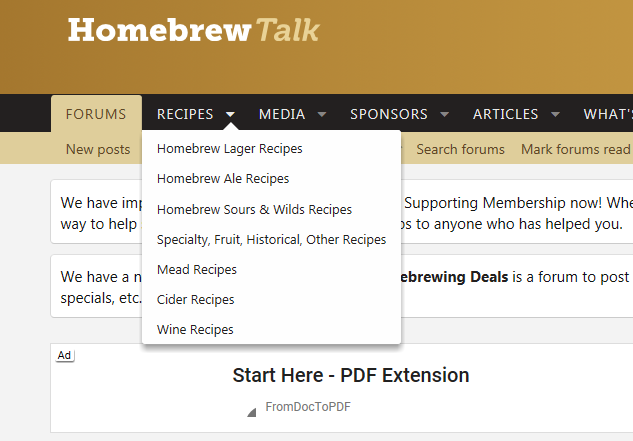noisebloom
Member
Decided to "experiment" for my second 1 gallon extract brew by making an Amber of my own recipe:
1 lb Caramel/Crystal Grain, 15L (for steeping)
1 lb Sparkling Amber Briese DME
0.2 oz Columbus hops in the boil
0.1 oz Simcoe hops at flameout
Tasted it at flameout and was happy with the malty flavor (figured it would mellow out after fermentation).
Close to when fermentation was over, tasted again... Was just the perfect amount of maltiness, putting it over a pale ale in that regard.
After fermentation, cold crashed, and then bottled with sugar. Snuck a taste again... and it tasted pretty bad. It basically tasted like an IPA... but a boring IPA at that.
I really should wait the three weeks and reserve judgment at this point, but I'm dwelling on it: is my beer likely to have any residual maltiness after conditioning based on my recipe?
1 lb Caramel/Crystal Grain, 15L (for steeping)
1 lb Sparkling Amber Briese DME
0.2 oz Columbus hops in the boil
0.1 oz Simcoe hops at flameout
Tasted it at flameout and was happy with the malty flavor (figured it would mellow out after fermentation).
Close to when fermentation was over, tasted again... Was just the perfect amount of maltiness, putting it over a pale ale in that regard.
After fermentation, cold crashed, and then bottled with sugar. Snuck a taste again... and it tasted pretty bad. It basically tasted like an IPA... but a boring IPA at that.
I really should wait the three weeks and reserve judgment at this point, but I'm dwelling on it: is my beer likely to have any residual maltiness after conditioning based on my recipe?



